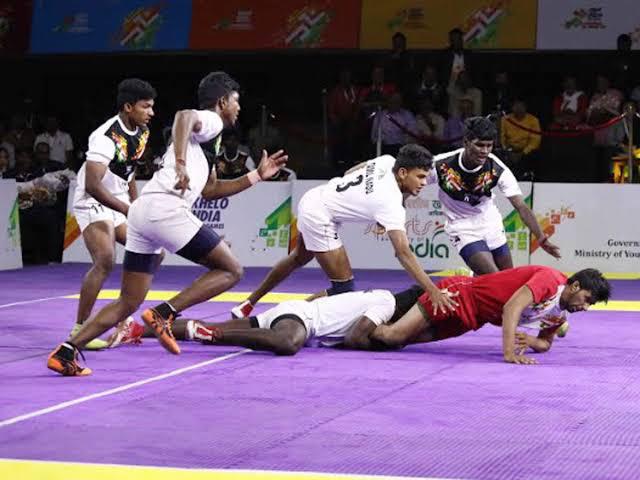Gravity isn’t your friend when you’re defending against takedowns. It’s working alongside your opponent to get you on the ground. Fortunately, you also have an ally: the cage. The cages used in modern MMA are as sturdy as walls, allowing you to lean your weight to stay balanced.
Cage walking, also called wall-walling, is the art of using the cage to help you get back on your feet. The wall can be just as useful in defending against takedowns.
This article will explore how to use the cage to increase your odds of successfully stuffing takedowns, how to wall walk, and other sneaky tactics you can do with a cage.
Why The Cage Wall Matters In MMA
The cage separates mixed martial arts from traditional martial arts like Judo, Karate, and Kung Fu, which typically occur on platforms or mats. MMA introduces a new variable into fights with the cage wall. It’s not just a boundary; it’s a tool that fighters can use to their advantage.
The cage can work as a third base during scrambles, a backstop that prevents opponents from driving you back and completing takedowns, and an escape ladder you use to get back on your feet.
Some ways to use the cage to your advantage in mixed martial arts include:
1) Don’t Get Flattened
Don’t allow opponents to flatten your body against the cage if they successfully drive you backward. That’s the worst position to be in, as your options are limited. Instead, pummel and secure an underhook on one side while posting your other arm on your opponent’s hips or the ground.
2) Get To A Hip
Wall-walking is one of the valuable skills MMA fighters can have on the ground. When done correctly, it should be extremely difficult for opponents to break down your posture and drag you back to the ground.
Here’s the breakdown:
- Turn to your side. The first thing you want to do is shift your weight to one of your hips. The cardinal BJJ rule holds here: never allow anyone to flatten you on the ground.
- Post your hand or elbow. Use it to create a base so you can prop yourself up. If necessary, frame to create space.
- Plant the foot of your bottom leg against the cage. You’re going to use this base to push yourself up.
- Lean against when pushing yourself up so you’re not carrying all your weight. Let the cage do some of the work.
Pay attention to your head positioning when trying to wall walk. Keep your forehead close to your opponent’s head or shoulders so you’re harder to control. You’ll have a much harder time returning to your feet if they can pull or push your head down.
3) Win The Underhook Battle

By securing underhooks, you can control your opponent’s posture and create opportunities for various strikes, takedowns, escapes, and submission attempts.
Going for underhooks is always a good idea when grappling, giving you more control over your opponent’s body. You’ll have an easier time fighting your way back up against the cage when you have an underhook.
Secure double underhooks, and you should have no problem reversing the position and disengaging. The fighter who’s better at securing underhooks typically dominates clinch positions.
Bonus Move: The Whizzer
Can’t get an underhook? No problem—use a whizzer (an overhook). A strong whizzer with a wide base can stuff takedown attempts and open up reversals.
To defend takedowns with a whizzer: Thread your arm over your opponent’s shoulder and under their armpit. Dig in as deep as you can and widen your base. Drive your hips into your opponent and circle to the side of the whizzer to escape.
4) Secure Wrist Control
Wrist control is the next best thing when you can’t secure underhooks. Controlling one of an opponent’s wrists prevents them from locking their hands together and completing takedowns.
Wrist control also makes it easier to peel their control of your legs or torso, turn and escape, and post. Wrist control is one of those tiny details that can considerably impact clinch positions.
Practicing Your Wall-Fighting Techniques
Practice makes perfect, especially when it comes to scrambling against the wall. Here are a few drills that will improve your ability to use the cage to your advantage:
- Wall-Walk Stand-Ups: Start seated with your back against the wall and a training partner on top. Work through posting, turning to your side, and walking up using the cage. Perform so many reps that you’re able to wall-walk in your sleep. You’ll also have to worry about punches, knees, and elbows during an MMA match, so this movement must become instinctive for you.
- Pummeling: Start in a clinch on the wall. Fight for underhooks and head position with a training partner. This drill helps you learn to pummel and use the cage to create angles.
- Wrist Control And Grip Breaks: This partner drill involves your partner trying to lock their hands while you try to control one of their wrists. You can perform this drill while standing or on the ground.
- Whizzer To Escape Or Reversal: Have a training partner shoot in on you while you use a whizzer to sprawl out of it and escape.
Common Mistakes To Avoid
Some of the mistakes to avoid when learning how to fight against the cage include:
- Getting Flat: Staying flat on your back with your knees up limits your defensive options. Always work to get on a side.
- Pushing Up With Your Arms Instead Of Your Legs: Your legs are stronger—use them to push off the cage, not just your arms.
- Waiting Too Long: The longer you wait to move, the more time your opponent has to improve their position.
- Giving Up Head Position: Keep your head tight and inside to dominate the clinch.
Wall-Fighting Is A Must In MMA
Using the cage to defend against takedowns or fight your way back to your feet is one of those skills that separates beginners from veterans in MMA. Remember, the cage can be an additional base if you know how to use it.
You may also like:
The Best No-Gi Chokes That Every MMA Fighter Should Master
If you’ve ever watched a fight and thought, “Wow, this guy never backs off?” You’ve witnessed pressure fighting in action. Pressure fighting in martial arts is the art of making your opponent miserable with constant…
The countless chokes you learn in Brazilian Jiu-Jitsu are a massive part of what makes it such a fun martial art. While most BJJ techniques were developed to be performed on opponents wearing Gis, many…
Hard sparring sessions in martial arts can make you feel like you’ve just walked through a brick wall. You’ve given it your all, and your muscles are sending you a strongly worded memo saying that…
Nothing feels as rewarding as landing a well-executed strike that finishes the match or secures a win. The knockout is the crème de la crème of combat sports like mixed martial arts (MMA), Muay Thai,…
Many strikers don’t think they need to learn how to wrestle until they feel what it’s like to battle a strong grappler. Striking and grappling are the two opposite ends of martial arts training, and…
“Punch a black belt in the face; he becomes a brown belt. Punch him again, purple…” These are the words of Carlson Gracie, one of the pioneers of mixed martial arts. Playing guard in Brazilian…
The back mount is the most dominant position in BJJ. It allows you to set up your attacks without your opponent peripherally seeing how you set them up. Because of this, opponents will rely on…
Martial arts legends can inspire children—or anyone else—to dedicate themselves to learning more about these ancient arts. Children typically have short attention spans, but they’ll sit through exciting stories about warriors battling tigers with bare…
Solo activities are wonderful for those looking to get out and explore the city on their own. Perhaps you just want to indulge in a good workout session to escape from your daily routine and…
Boxing is often referred to as “the sweet science” because it is more than just throwing punches. Boxing is about precision, timing, and strategy to scientifically defeat the opponent. While fundamental techniques are the core…
BJJ constantly evolves with new techniques and forgotten ones being rediscovered. While classic submissions are staples in every grappler’s arsenal, many lesser-used techniques can catch opponents off guard and open up new attacking opportunities. Focusing…
A loss during competition sometimes feels like a sucker punch to your ego. One minute, you’re on top of the world and questioning every decision you made during the match—and maybe even in life—the next…





































